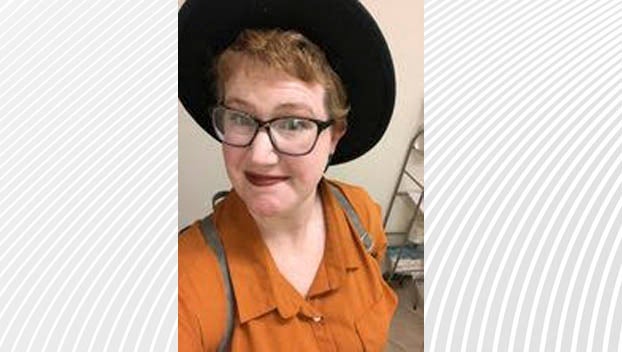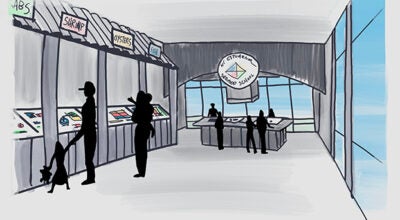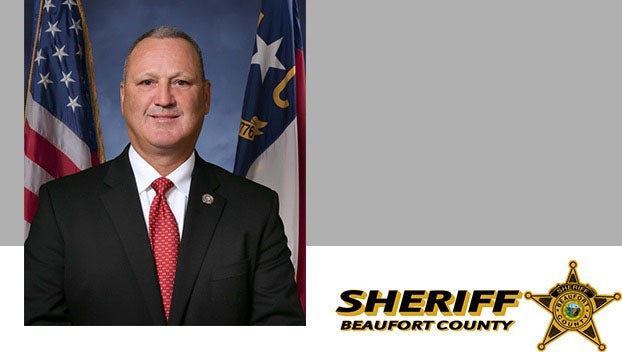Nonprofits by the numbers: They want to help their neighbors, but when numbers don’t add up nonprofits can find themselves being the ones in need
Published 3:46 pm Friday, August 19, 2022

- Faith Overton is the executive administrator at Heart for ENC. She is a long-time Beaufort County resident who wants to help all local nonprofits succeed. Photo courtesy of Overton.
|
Getting your Trinity Audio player ready...
|
It is the aim of every nonprofit organization to make a positive difference in the lives of people around them; however, it is much more difficult to make a difference when insufficient demographic information builds a barrier to necessary funding.
Data collected through the U.S. Census Bureau shows only a portion of the entire population in Beaufort County. That portion consists of those who have time and energy to devote to filling out a survey. It is not the same population who would benefit from services provided by nonprofit organizations that assist with meeting basic needs, financial literacy and/or employment.
Thus, this poses a problem where nonprofits have to rely on insufficient data to try to earn funding through grants, donations and government programs to help them serve an underrepresented population.
This is where people like Faith Overton, executive administrator for Heart for ENC, step in and try to remedy the cycle. Heart for ENC is a nonprofit in Greenville that provides training, resources, network opportunities and grant writing services to other nonprofits in eastern North Carolina. Heart for ENC is hoping to branch out to Beaufort County, according to Overton.
“It’s a real struggle because we have much bigger pockets of low income housing and a low income demographic of people that are in need, but we don’t have enough evidence based data to show,” Overton said.
She continued using an example, “…as a nonprofit person, if I don’t have enough data – if I don’t have enough ways to show you how a potential project with my nonprofit can impact this community – how many are in this community and the suspected outcome – then I’m probably not going to get grants.”
Overton explained that grants are a huge source of funding for nonprofits because it is difficult to sustain an organization on fundraisers, donations and sponsorships alone.
Perception and data of the county population shows a higher income level and a sizable retirement community, Overton shared. According to the North Carolina Department of Commerce, the 2019 estimated median household income in Beaufort County was $59,555. The 2020 estimated population of residents living below the poverty line in the county was 8,434 or 18.1% out of a total county population of 47,168 in 2019. Per the U.S. Census Bureau, a quarter of the county’s population is aged 65 or older. Residents under the age of 18 make up a total of 24.3% of the population which means 75% of the population is between 19 and 64. The largest age group is not recorded on the bureau’s webpage for Beaufort County.
Another challenge nonprofits face is admitting when they are the ones who need assistance.
A report published by Stanford Social Innovation Review states that unrealistic expectations from those investing in nonprofits and nonprofits not increasing operating expenses forms a toxic pattern that leaves nonprofits wanting.
“The first step in the cycle is funders’ unrealistic expectations about how much it costs to run a nonprofit. At the second step, nonprofits feel pressure to conform to funders’ unrealistic expectations. At the third step, nonprofits respond to this pressure in two ways: They spend too little on overhead, and they underreport their expenditures on tax forms and in fundraising materials. This underspending and underreporting in turn perpetuates funders’ unrealistic expectations. Over time, funders expect grantees to do more and more with less and less—a cycle that slowly starves nonprofits,” according to Stanford Social Innovation Review.
While nonprofits in eastern North Carolina have plenty of heart and passion for their populations, they aren’t as interested in logistics. They will do everything in their power to help someone in need, but find themselves without enough resources in the process.
“When you go into a space where you want to go alongside [nonprofits] – but in a professional setting – you have to understand where that comes from so they can help be a tool and not a hindrance,” Overton said. This means building relationships with nonprofits where empathy and compassion are the foundation in hopes it will lead them to implement ideas to develop their organization from a professional standpoint.
Those resources, in addition to funding, are a CPA and a legal representative to be members of their board. Beaufort County nonprofits need the professional help, but won’t ask for it because oftentimes they have a competitive mindset, Overton said. Meaning, the nonprofits are resistant to help they believe could “steal” their clients. Professional resources aren’t trying to steal nonprofits’ clients, but rather, they are trying to help nonprofits be sustainable.
Beaufort County nonprofits have a unique challenge in that if they are neither affiliated with the Washington-Beaufort County Chamber of Commerce nor a large church, then they are not easy to locate because there is currently not an up to date database listing local nonprofits, Overton said. Therefore, there isn’t enough demographic data in addition to there being a lack of knowledge on who to contact for services.
It’s not all doom and gloom for local nonprofits. Overton believes there is a paradigm shift within local nonprofits where they can begin to work together instead of competing with one another to get donations when there are not enough donations to go around.
“I just feel this wave of change and positivity coming through. I want to be part of that group who’s willing to get in the dirt and dig it up with them. My passion is for the people…,” Overton said. “I love the people here so much. I want to see them have their day and be successful.”





